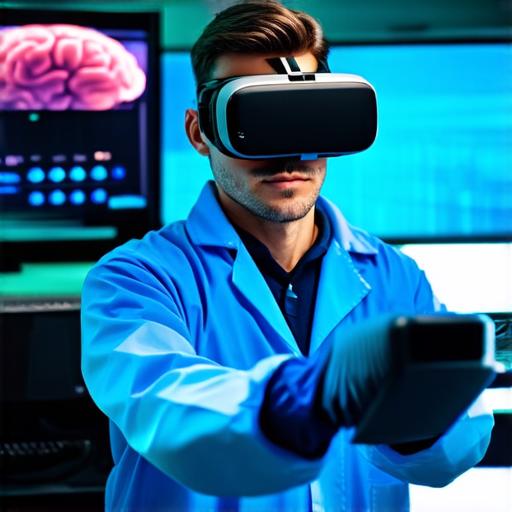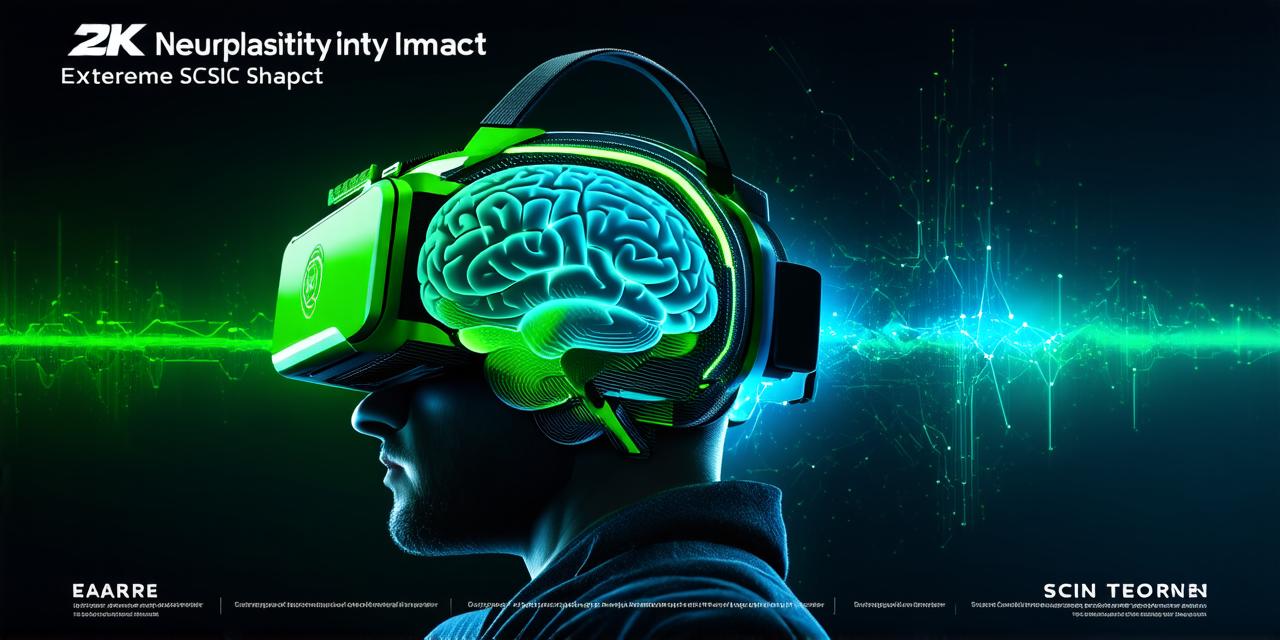The Power of Immersive Experiences
One of the key features of VR is its ability to create highly immersive environments. By surrounding users with a 360-degree view of a virtual world, VR can provide a level of immersion that traditional media simply cannot match. This has led some researchers to investigate the effects of immersive experiences on the brain.
For example, a study published in the journal NeuroImage found that participants who spent 20 minutes in a VR environment showed changes in their brain activity compared to those who spent the same time watching a traditional video or playing a game on a computer screen. Specifically, the researchers found that the participants’ brains were more active in areas related to sensory processing and visual attention when they were using VR.
Another study published in the journal Science found that VR can be used to treat phobias by exposing patients to virtual representations of their fears in a safe and controlled environment. This has led some researchers to investigate the potential of VR as a tool for treating other mental health disorders, such as depression and anxiety.
The Science Behind Virtual Reality
While the effects of immersive experiences on the brain are still being studied, there is growing evidence that VR can impact various aspects of brain function. One key factor is the way in which VR stimulates the brain’s reward centers.
For example, a study published in the journal Nature Communications found that participants who used VR to explore a virtual world reported higher levels of pleasure and satisfaction than those who watched traditional media or played games on a computer screen. This is thought to be due to the fact that VR stimulates the brain’s reward centers, which are responsible for processing pleasurable sensations.
Another factor is the way in which VR can affect our sense of presence. By providing a highly immersive environment, VR can create a sense of being in a different world, which can have important implications for our cognitive processes and decision-making abilities. For example, a study published in the journal Frontiers in Psychology found that participants who used VR to simulate real-world scenarios showed better performance on tasks that required them to make decisions based on their sense of presence in the virtual environment.
Case Studies in Virtual Reality Development
As virtual reality technology continues to advance, developers are finding new and innovative ways to use this technology for a variety of purposes. For example, in the gaming industry, VR has been used to create highly immersive experiences that allow players to feel like they are truly part of the action.
In the medical field, VR has been used for surgical training and as a tool for treating phobias and mental health disorders, as mentioned earlier. In addition, VR has also been used to treat conditions such as PTSD by exposing patients to virtual representations of traumatic events in a controlled environment.
One example of the potential for VR to impact brain function is the use of VR in physical therapy. By providing a highly immersive environment, VR can help patients with injuries and disabilities to improve their motor skills and reduce pain and anxiety associated with their condition. For example, a study published in the journal PLOS ONE found that participants who used VR for physical therapy showed significant improvements in their balance and gait compared to those who received traditional physical therapy.
The Ethics of Virtual Reality
As virtual reality technology continues to advance, there are growing concerns about its impact on our brains and society as a whole. For example, some have raised questions about the potential for VR to create addictive behavior or to be used to manipulate our perceptions and beliefs.
One example of this is the use of VR in political campaigns. In the 2016 US presidential election, virtual reality was used by both the Clinton and Trump campaigns to create highly immersive ads that were designed to influence voters’ perceptions and decisions. While these ads were not explicitly manipulative, they did rely on the power of immersive experiences to create a sense of realism and authenticity that traditional media cannot match.
Another concern is the potential for VR to be used to create highly realistic simulations of violence and other traumatic events. This has led some researchers to investigate the potential of VR as a tool for treating PTSD, as mentioned earlier. However, there are also concerns about the potential for these simulations to trigger negative emotions and behaviors in vulnerable individuals.
Conclusion
Virtual reality technology is rapidly advancing and is being used for a variety of purposes, from gaming and entertainment to medical treatments and surgical training. While there is still much to be learned about how VR impacts the brain, it is clear that this technology has the potential to revolutionize the way we experience and interact with the world around us.
FAQs
Here are some frequently asked questions related to virtual reality:
- 1. How does virtual reality impact brain function?
- 2. What are some examples of how virtual reality is being used in gaming?
- 3. How can virtual reality be used for medical treatments?
- 4. What are some concerns about the ethics of virtual reality?
- 5. How can virtual reality be used to treat PTSD?
Virtual reality can stimulate the brain’s reward centers and affect our sense of presence, which can have important implications for cognitive processes and decision-making abilities.
Virtual reality games such as “Beat Saber” and “Job Simulator” provide highly immersive experiences that allow players to feel like they are truly part of the action.
Virtual reality has been used for surgical training, treating phobias and mental health disorders, and physical therapy.
There are growing concerns about the potential for virtual reality to create addictive behavior or to be used to manipulate our perceptions and beliefs.

Virtual reality has been used to expose patients to virtual representations of traumatic events in a controlled environment, which has shown promise as a treatment for PTSD.
